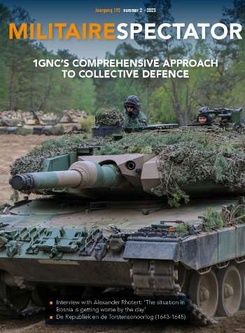Well before the Russian invasion in Ukraine in 2022 NATO decided to redirect its efforts towards Defence and Deterrence throughout Alliance territory, explicitly opposing an ever more assertive Russian Federation. 24 February 2022 brought what was to be a conflict not only between democratic and autocratic systems, but also between parties pursuing opposing ideologies regarding the protected status of non-combatants. From the start Putin’s war deliberately targeted populations, civilian infrastructure and urban centres with the aim to spread terror and weaken political resolve. The war and humanitarian crisis in Ukraine demonstrate that the future of conflict will include the use of both hybrid and conventional military capabilities to target the most vulnerable. Protecting civilians in urban environments requires a comprehensive approach to foresee and mitigate risks to civilians and ensure respect for International Humanitarian Law.
Colonel Paul van der Touw EMSD*
Recognizing that urban warfare will be inevitable,[1] NATO introduced two specific policies: firstly on resilience and secondly on the Protection of Civilians in Armed Conflict. Both were designed to help understand and mitigate conflict-related impacts on civilians, albeit from different perspectives. In order to respond to this new and still-changing threat environment NATO will be required to embrace an innovative approach connecting civil preparedness and military response at all levels and potentially integrate the various lenses under the capstone ‘human security’.[2] Following this line of thought, 1 (German/Netherlands) Corps (1GNC) redirected the main effort of the Common Effort programme[3] from Crisis Response to Collective Defence.
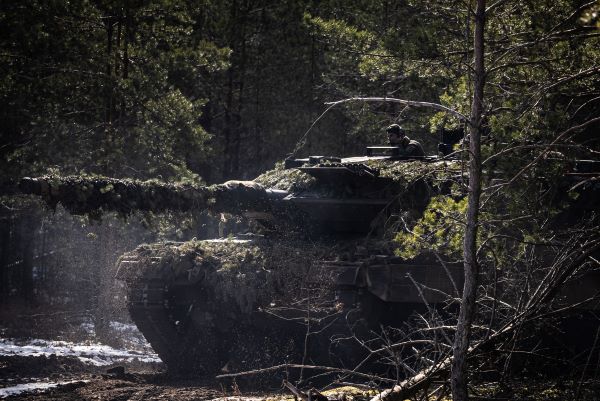
A German Leopard tank moves through the forest. In every role 1GNC’s composition is suited to contribute to NATO Deterrence and Defence through its ability to direct large-scale land operations. Photo NATO
In deduction of the approach to connect civil preparedness with human security in operations, in this article 1GNC delivers a plea to military forces to invest in the ability to protect civilians (in armed conflict), support national resilience, and conduct stewardship. To operate effectively, in any operational context but certainly within the context of Collective Defence, the Corps declared these three focal areas for the targeted development of its Comprehensive Approach.
Land operations: by nature population-centric
Germany and the Netherlands, as Framework Nations, committed 1GNC to NATO’s Strategic Framework in various roles.[4] In every role the Corps’ composition is suited to contribute to NATO Deterrence and Defence[5] through its ability to direct large-scale land operations. Since land operations are by nature population-centric, Commander 1GNC will be confronted with a multitude of challenges and dilemmas related to operating in a condensed and increasingly complex civil environment. So apart from ensuring military dominance on the battlefield it is crucial the Corps outmanoeuvres its opponents in the civil environment as well.[6]
Operations in Afghanistan and Iraq underlined the importance for the military to understand the fabric of the society it operates in.[7] Maintaining a population-centric perspective respecting human security is crucial to achieve any military success, no less so in the context of Collective Defence. The battle for control of and support from a contested society can only be won if we convince and instil confidence in the population and its leading elite, whose cooperation, trust and support we aim to secure.[8] And as we cannot learn to navigate the civil environment through the internet, civil-military interaction remains one of the primary means for the land force to expand its knowledge and build shared situational awareness.
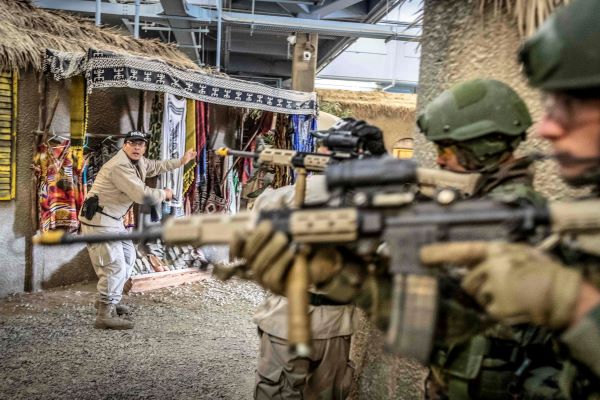
Military exercise in an urban environment. Operations in Afghanistan and Iraq underlined the importance for the military to understand the fabric of the society it operates in. Photo MCD, Sjoerd Hilckmann
The aim must be to create understanding about resilience, or the lack thereof, and identify societal strengths and weaknesses. To achieve such understanding requires systematic assessment in cooperation with the intelligence community, much in the same way in which a conventional adversary would be assessed. The analysis must include an understanding of civilian needs, of who satisfies those needs and of the system’s vulnerability to disruption.
Mitigating harm
Past and current conflicts have demonstrated that civilian populations will be targeted in various ways, including their critical infrastructure, goods, and services.[9] The challenge for military forces is to defeat threats harboured by the civilian population while mitigating civilian harm as much as possible. It is vital to predict an adversary’s intentions, abilities, and actions to disrupt a society.[10] Adversaries could seek either to keep populations fixed in place, generating significant political-military dilemmas, or to force the mass movement of people to stress Alliance member states. These dynamics took place across Europe with a flow of refugees from Belarus crossing the Polish border and the current exodus of Ukrainian refugees into Western Europe.
Based on experience in conflicts over the past three decades, NATO made significant progress in integrating the Protection of Civilians (PoC) into military campaigns. Protecting civilians is critical to all three of NATO’s core tasks[11] since future confrontations are likely to accidentally harm civilians. NATO’s ability to implement protective measures is eminently relevant for legal, moral and humanitarian reasons. Approved by the North Atlantic Council in 2018, the NATO Military Concept for the Protection of Civilians[12] is designed as a set of planning principles for all NATO members and NATO-led campaigns. The concept was operationalized in the PoC Handbook (2021),[13] which explains how PoC considerations are part of the military planning process. The Handbook provides guidance on how to engage the civilian population with due consideration using three interrelated thematic lenses: mitigate harm, facilitate access to basic needs, and contribute to a safe and secure environment.
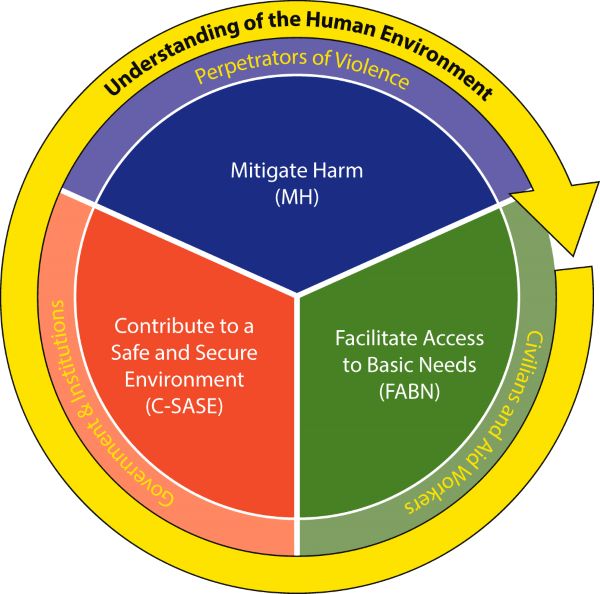
Figure 1 Framework Protection of Civilians in Armed Conflict. Source: NATO PoC Handbook, page 8
Resilience is a deterrent
In discussions on sustainable and inclusive security the applicability of the concept of resilience often stumbles upon a jumble of terms and objectives. Resilience has been a central pillar of total defence, a concept developed during the Cold War and encapsulating a state-centric approach to security (territorial integrity, sovereignty) in the event of a military attack. Not until 1990 was the concept refocused to anchor disaster management in civil preparedness. It is currently being revisited to introduce an all-hazards lens to a revitalized whole-of-society approach.
The application of the concept of resilience emerges as a critical measure against hybrid threats. If hybrid strategies seek to undermine the security and stability of societies while applying pressure from within, then identifying existing vulnerabilities and potential fault lines to build resilience against risks and threats would be a prudent undertaking. After all, resilient societies play a crucial role in deterrence and defence as they provide critical support to the Alliance in times of both peace and crisis. Resilient communities provide a less attractive target for malicious outside actors, significantly increasing the cost of victory and reducing the chances of the adversary’s success.
Although they are primarily a national responsibility, resilience and civil preparedness are important aspects of collective security, and they are therefore a subject of active engagement by NATO with capitals, civil ministries and the EU. NATO institutions assist member states through collaborative assessment and advice, applying an ‘all hazards’ approach to reduce societal vulnerabilities and prepare societies for hardship. Even before Russia’s invasion of Ukraine in 2022 the security environment had become unpredictable which led to a renewed focus on civil preparedness.[14] NATO and its member states must be ready for a wide range of contingencies that could severely impact societies and critical infrastructure. This is especially relevant in the confrontation with new threats, including cyber, information and other hybrid activities. These activities undermine political and societal cohesion just as much as the conventional force-on-force aspects of warfare. They certainly add to the complexity of a crisis or conflict and require an integrated response.
What does it mean for 1GNC-led operations?
Critically, the comprehensive nature of 1GNC-led operations is nested in the Corps’ operational design of Operations Plan 2027. Through this plan the Corps aims to continue the Comprehensive Approach as a proven element of our Operating Concept, including warfighting. Understanding the civil environment, its resilience and vulnerabilities is a vital component of the Corps’ picture of the operating environment and not seldom a driver of decision-making.
To meet the demands of operating in a high-intensity, high civil-military dependency environment 1GNC aims to develop a staff function capable to provide policy advice on civil matters, coordinate staff action to gain situational understanding of the civil environment, support comprehensive planning, direct civil-military operations, and support campaign assessment. This function exceeds the present scope of the CIMIC-branch and will be based on the existing model of the Corps’ Communication and Engagement Coordination Cell. The function is to comply with the parameters of both warfighting and Crisis Response Operations and must be adapted to the level of civil-military interaction required to execute the military campaign. In parallel, the Corps formulates additional capacities in terms of assessment and liaison. These are required to ensure that the needs of the deployed force are met, that Strategic Communication is aligned with the Host Nation and that the Host Nation’s resilience can be supported.
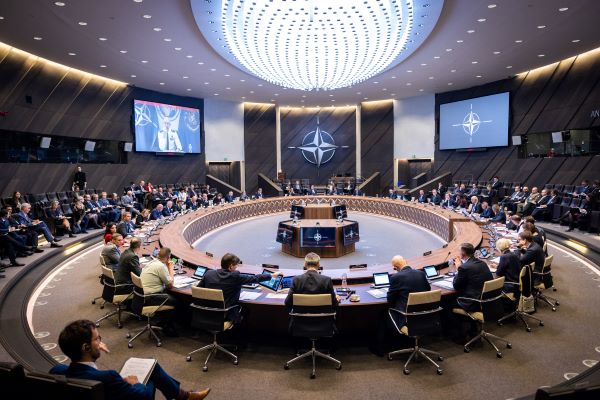
Meeting of NATO’s Senior Resilience Officials. NATO institutions assist member states with resilience through collaborative assessment and advice. Photo NATO
With these parameters set, the Corps is able to make the necessary investments in the following three civil-military aspects, which we consider focal areas in the context of Collective Defence.
Protection of Civilians
1GNC acknowledges that all feasible measures must be taken to avoid, minimize and mitigate harm to civilians. Due consideration is given to those groups that are most vulnerable to immediate military effects and to violence within the local context. The Corps continuously engages with actors, authorities and institutions able to assist in understanding the civil environment. Understanding not just in a quantifiable sense, but also in the sense of interpreting culturally-motivated perceptions and actions that may lead to unexpected behaviour of parts of the population. To influence such behaviour with the intent to mitigate harm, the Corps communicates using multiple avenues, aligned with the Host Nation.
1GNC has institutionalized civilian harm mitigation measures at all stages of operations. For instance, by purposely integrating civilian factors in the Land Targeting Process and giving special attention to dual-use targets,[15] the Corps is better positioned to find the right balance between kinetic and non-kinetic engagement. The principal thought is that civilian harm can be avoided better through non-kinetic than kinetic engagement. Another example is the application of Civilian Casualty mitigation procedures in operations. These procedures include data and evidence gathering, tracking, reporting and monitoring, as well as actions to investigate all suspected or alleged collateral damage. Such mitigation procedures provide better understanding of the (civil aspects of the) operating environment, and allow commanders to learn from mishaps. Understanding the military effects on the operating environment is vital to quickly and accurately address any harm done, and to avoid misperceptions and maintain credibility and legitimacy as a force.
Taking encouragement from NATO, to induce the proper mind-set 1GNC includes fundamentals and dilemmas related to the Protection of Civilians as the standard elements of internal training and training we deliver as Professional Training Platform.[16] Military decision-makers must have comprehensive understanding of the operating environment and they assess not only from a legal perspective (‘are we allowed to?’), but also from the perspective of human security (‘should we?’) within hybrid and high-intensity conflicts.
Resilience
By default, operations in the context of Collective Defence will be supported by or conducted on the territory of one or more member states. National sovereignty of a member state is neither superseded nor curtailed by invoking Article 5. However, pursuant to the NATO Charter, member states are committed to deliver unrestricted Host Nation Support to set conditions for the military campaign on its territory to succeed. Although deployed NATO forces do not have a leading role in organizing or directly supporting the Host Nation’s resilience, by design the state and the force are mutually dependent.
1GNC adheres to Seven Baseline Requirements, as defined by NATO, to assess a nation’s resilience level and identify areas that potentially require deconfliction or support:[17]
- assured continuity of government and critical government services;
- resilient energy supplies;
- ability to deal effectively with uncontrolled movement of people;
- resilient food and water resources;
- ability to deal with mass casualties;
- resilient civil communication systems;
- resilient civil transportation systems.
These Baseline Requirements provide a standardized frame to facilitate targeted analysis, collaborative knowledge development and integrated crisis management, all of which are incidentally of critical importance when countering hybrid threats. For the Corps staff to deliver an in-depth analysis on potential vulnerabilities and mitigation strategies requires expertise of a vast array of topics.
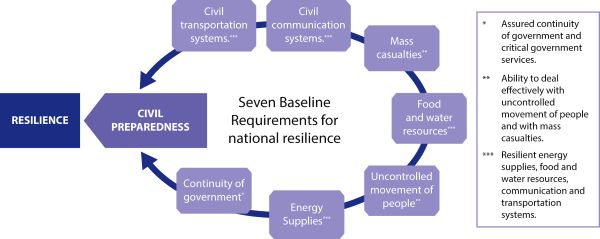
Figure 2 Seven Baseline Requirements for national resilience
The Corps intends to generate this expertise both in reach-back and as a deployable capability via the Common Effort Community. The Community was established in 2010 as a platform to foster knowledge development and integrated planning as intended with NATO’s Comprehensive Operations Planning Directive. Community members represent a diverse group of state, private and public institutions, all with vested interests to promote international stability.
Stewardship
Regardless of the level of preparedness, it is uncertain whether a Host Nation remains capable of governing the full size of its territory during armed conflict. Consequently, 1GNC must be prepared to deal with limitations of Host Nation Support and the reduced delivery of services to parts of the population. Contributing factors may be a deteriorating security situation, breakdown of critical infrastructure, or reduced responsiveness of the population. Irrespective of the cause, to maintain freedom of action and legitimacy NATO forces must be prepared to act as caretaker in regions where local authorities are temporarily ineffective and the population is in peril. This means the force should be capable of delivering protective support, facilitating humanitarian assistance and controlling the movement of people.
Since conventional forces are less suitable for such caretaker tasks, to exercise stewardship in the broadest sense and for a longer duration requires a dedicated military capability.[18] This capability is historically referred to as Civil Affairs and needs reinvestment by NATO and its member states. In careful preparation of potential caretaker tasks, 1GNC will develop a blueprint for such a Civil Affairs capability, which may serve as a starting point for further studies by NATO or the Framework Nations.
* Colonel Paul van der Touw EMSD is Deputy Chief of Staff for Communication & Engagement at 1 (German/Netherlands) Corps.
[1] Center for Civilians in Conflict, ‘Policies and Practices to Protect Civilians: Lessons from ISF Operations Against ISIS in Urban Areas’, 1 October 2019. See: https://civiliansinconflict.org/publications/research/policies-practices-to-protect-civilians/.
[2] Andrew Atkinson, Marco Grandi and Gergana Vaklinova, ‘Resilience, Human Security, and the Protection of Civilians: A critical approach for future urban conflict’, The Stimson Center, 13 June 2022. See: https://www.stimson.org/2022/resilience-human-security-and-the-protection-of-civilians-a-critical-approach-for-future-urban-conflict/.
[3] See: www.common-effort.org. In 2020, 1GNC through ‘The Two Pillar-Approach’ expanded the Common Effort Community’s investment in collaborative comprehensive mechanisms from Crisis Response Operations to Collective Defence (warfighting).
[4] NATO Long Term Commitment Plan 2022-2026.
[5] NATO 2022 Strategic Concept. Endorsed during the Madrid Summit on 29 June 2022, 2-34.
[6] David Brown et al, War amongst the people (Howgate Publishing, 2019), Sandhurst Trends in International Conflict.
[7] Michael E. O’Hanlon, ‘Iraq without a plan’, Policy Review no. 128 (December 2004&January 2005), Hoover Institution.
[8] T.R. Mockaitis, ‘Winning hearts and minds. The unlearned lessons of counterinsurgency’, Militaire Spectator 174 (2005) (6).
[9] Center for Civilians in Conflict, ‘Emerging Patterns of Civilian Harm in Ukraine’, 9 March 2022. See: https://civiliansinconflict.org/wp-content/uploads/2022/03/Emerging-Patterns-of-Civilian-Harm-in-Ukraine_Final.pdf.
[10] Sahr Muhammedally, ‘A Primer on Civilian Harm Mitigation in Urban Operations’, Center for Civilians in Conflict, June 2022. See: https://civiliansinconflict.org/wp-content/uploads/2022/07/CIVIC_Primer_CivilianHarm_Mitigation_UrbanWar.pdf.
[11] The NATO core tasks are: Deterrence and Defence, Crisis prevention and Management, and Cooperative Security. See NATO 2022 Strategic Concept, 20-64.
[12] Based on the NATO Policy for the Protection of Civilians, endorsed by the Heads of State and Governments participating in the meeting of the North Atlantic Council in Warsaw, 8-9 July 2016.
[13] SHAPE J9 Division, ‘The protection of civilians Allied Command operations handbook’, 11 March 2021. See: https://shape.nato.int/news-archive/2021/the-protection-of-civilians-allied-command-operations-handbook.
[14] Anchored in Article 3 of the NATO Treaty, civil preparedness has three core functions: continuity of government, continuity of essential services, and civil support to military operations.
[15] Dual-use targets are those military targets that have both a military and civilian application. Because of their civilian application, these types of targets are given the utmost consideration in determining whether and how they are engaged.
[16] As a Professional Training Platform, by nations’ request, 1GNC designs and delivers training to NATO formations (division and brigade), at times for the purpose of their national certification.
[17] Andrzej Jacuch, ‘Security and defense challenges – civil preparedness in NATO’, Scientific Journal of the University of Land Forces 52 (2020) (2). See: https://www.researchgate.net/profile/Andrzej-Jacuch/publication/342546554_Security_and_defense_challenges_-_civil_preparedness_in_NATO/links/61e08c648d338833e368cf3a/Security-and-defense-challenges-civil-preparedness-in-NATO.pdf?origin=publication_detail.
[18] United States Department of the Army, ‘Civil Affairs general concepts’, January 2019. See: https://armypubs.army.mil/epubs/DR_pubs/DR_a/pdf/web/ARN16411_GTA%2041-01-001_FINAL.pdf.
